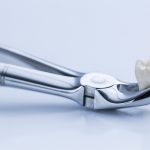When dental and maxillofacial abnormalities threaten to affect a patient’s quality of life, it may be time to consider surgery.
Bimaxillary Osteotomy, or double-jaw surgery, is a procedure used to correct maxillofacial deformities that affect both jaws: the upper jaw (maxilla) and the lower jaw (mandible). The goal of the surgery is to realign both jaws, which in turn allows for better alignment of the teeth.
Specialists at the Clinique MFML explain what Bimaxillary Osteotomy is, why it may be necessary, how it is performed, and what you can expect in terms of results.
What does Bimaxillary Osteotomy involve?
Bimaxillary Osteotomy is a surgical procedure that aims to correct the position of the upper and lower jaws at the same time.
This orthognathic surgery (jaw surgery) is a combination of upper jaw surgery (LEFORT 1 osteotomy) and lower jaw surgery or ‘mandibular osteotomy’ (sagittal osteotomy of the ascending mandibular branches). Chin surgery (genioplasty) is also sometimes recommended as part of the overall corrective procedure.
Bimaxillary Osteotomy is performed by specialists in oral and maxillofacial surgery. The results are significant and noticeable, both in terms of dental occlusion and overall facial aesthetics.
Why is Bimaxillary Osteotomy done?
Bimaxillary Osteotomy is recommended for people whose lower jaw is too short or too long and/or who suffer from a misaligned upper jaw. An upper jaw can be badly positioned in several ways:
- From front to back
- And/or vertically
- And/or associated with a problem related to the width of the jaw
These discrepancies can lead to a ‘bad bite’ (malocclusion), which can cause damage to the supporting tissues of the teeth (peridontium), and eventually lead to early tooth loss.
Malocclusion can also be detrimental to the temporomandibular joints and cause pain, cracking or limitations in the opening of the mouth over time.
The goal of the surgery is therefore both functional (to reposition the jaws properly to restore chewing function) and aesthetic (to give the face more harmonious contours from the front and the side)
Who needs double jaw surgery?
Bimaxillary Osteotomy is a surgical procedure that is recommended to correct significant anomalies that affect both jaws. Double-jaw surgery is necessary in cases where there is:
- A significant jaw misalignment of more than 7-8 mm
- Facial asymmetry with a tilted smile (canted occlusal plane)
- A gap (i.e. a lack of contact between the top and bottom sets of teeth, or dental arches)
- Malocclusions in multiple planes of space: sagittal, vertical, transverse
In some cases, surgery on a single jaw can resolve the occlusal or aesthetic problem.
However, to obtain a functional, aesthetic and stable result, some patients may require a bimaxillary procedure.
Your orthodontist and maxillofacial surgeon will be able to determine the type of surgery needed in your specific case.
How is a Bimaxillary Osteotomy performed?
Bimaxillary Osteotomy is performed under general anesthesia in a hospital. The operation lasts approximately 3 to 4 hours.
The maxillofacial surgeon, accompanied by a surgical assistant, makes incisions in the mucous membranes within the mouth to avoid creating any visible scars on the face.
These incisions allow the surgeon to cut the bone of both jaws and mobilize the dental arches. Once the dental arches are repositioned according to your specific functional and aesthetic requirements, miniature titanium plates and screws are installed to hold them in place. The surgeon then closes the incisions with absorbable sutures which disappear within a few weeks.
Following double-jaw surgery, orthodontic elastics connecting the two jaws are sometimes installed temporarily, to help the patient to adapt quickly to their jaws’ new position (without immobilizing the jaws completely).
What to expect after Bimaxillary Osteotomy
Following double-jaw surgery, the average hospital stay is 24 hours – but this can vary from person to person.
Post-operative medical treatment includes medication to reduce pain and inflammation.
Good oral hygiene is essential for proper healing. Teeth and gums should be gently brushed after each meal with an “ultra soft” toothbrush. Mouthwash should also be used regularly. Smoking is forbidden for one month, until healing is complete.
A liquid diet is recommended for 48 hours following the surgery, followed by a soft diet for a period of 1 month. It is not recommended to do sports for 2 months following double-jaw surgery, to avoid any complications.
It is crucial to carefully follow the indications provided by your practitioner for a quick and trouble-free recovery.
Trust the maxillofacial surgeons at Clinique MFML
A successful Bimaxillary Osteotomy requires close collaboration between your orthodontist and your maxillofacial surgeon to determine the exact type of procedure you will need.
Despite several potential disadvantages, Bimaxillary Osteotomy can significantly improve a patient’s quality of life by providing a more aesthetically pleasing smile and improved oral functionality.
If you need orthognathic surgery, contact Clinique MFML in Montreal. Our team of maxillofacial surgery specialists will support you during your surgery and hospitalization. We can’t wait to bring back your smile!




